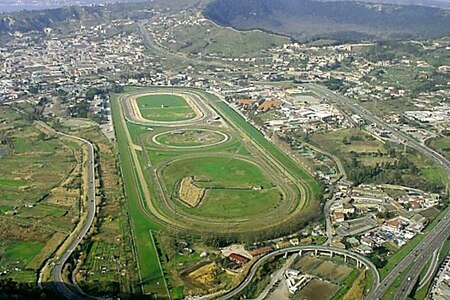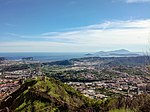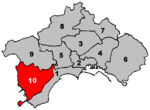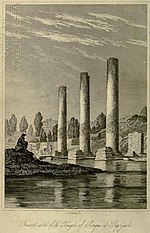Agnano

Agnano is a suburb of Napoli, Italy, situated southwest of the city in the Campi Flegrei region. It was popular among both ancient Greeks and Romans and was famed for its hot sulphurous springs. Lake Agnano formed in the Middle Ages in the volcanic crater but was drained in 1870 to increase arable land and reduce the habitat of the Anopheles mosquito, which carries the malaria parasite. The crater is now home to the Agnano hippodrome and the town. After World War II, Agnano was home to the U.S. Naval Support Activity consisting of the U.S. Naval Hospital, administrative offices, barracks, and two Department of Defense Education Activity schools: Naples Elementary School and Naples American High School.
Excerpt from the Wikipedia article Agnano (License: CC BY-SA 3.0, Authors, Images).Agnano
Contrada Pisciarelli,
Geographical coordinates (GPS) Address Nearby Places Show on map
Geographical coordinates (GPS)
| Latitude | Longitude |
|---|---|
| N 40.844722222222 ° | E 14.149722222222 ° |
Address
Riserva Naturale Cratere degli Astroni
Contrada Pisciarelli
80078 , Rione La Solfatara
Campania, Italy
Open on Google Maps









